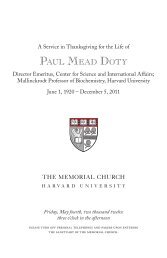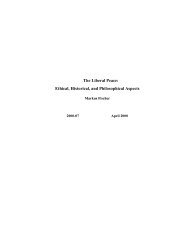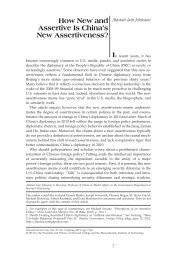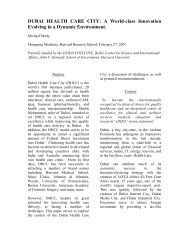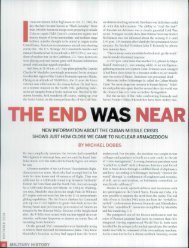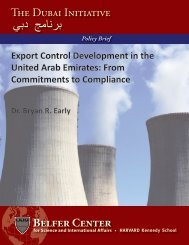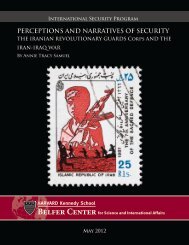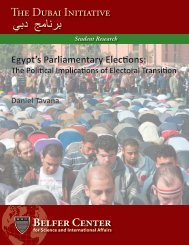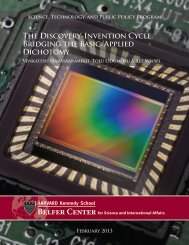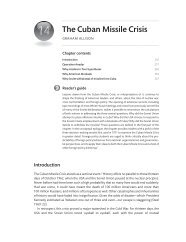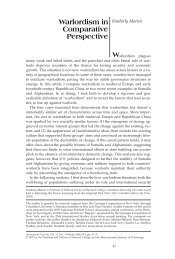Zhang Hui - Belfer Center for Science and International Affairs ...
Zhang Hui - Belfer Center for Science and International Affairs ...
Zhang Hui - Belfer Center for Science and International Affairs ...
You also want an ePaper? Increase the reach of your titles
YUMPU automatically turns print PDFs into web optimized ePapers that Google loves.
A re-examination of the evidence of the North Korean nuclear explosion sug-<br />
gests that the test was likely not a failure if Pyongyang had planned <strong>for</strong> a yield<br />
of 4 kt, as it told Beijing prior to the event. If the design yield of the device was<br />
indeed 4 kt, then it is possible that North Korea was pursuing a more compact<br />
warhead, which may have profound implications <strong>for</strong> its ability to deliver a nucle-<br />
ar device with its missile capabilities.<br />
Estimating Explosive Yield<br />
In an ef<strong>for</strong>t to analyze the success of a nuclear test, it is critical to determine<br />
the actual yield of the nuclear explosion (nominal or explosive yield) as well as<br />
the yield that the device was designed to produce (design yield). A test with a<br />
1 kt explosive yield from a nuclear device with a design yield of 1 kt would, of<br />
course, be a complete success. Conversely, the same 1 kt explosive yield from a<br />
device with a design yield of 50 kt would be a failure.<br />
Without on-site measurements or North Korean cooperation, the best way<br />
to estimate the explosive yield of the Oct. 9 test is to analyze the seismic data<br />
of the explosion. Immediately following the test, reports from around the world<br />
noted a seismic wave magnitude (Mb) of between 3.5 <strong>and</strong> 4.9 on the Richter<br />
scale, equaling an estimated average seismic body wave magnitude of 4.2 ± 0.2.<br />
Naturally, a degree of uncertainty exists in the conversion of seismic magni-<br />
tude to explosive yield, which is affected by many different factors. 4 Similar seis-<br />
mic magnitude values can correspond to yields that differ by a factor of 10. For<br />
instance, variations in the geological structure of the test site can affect signal<br />
attenuation <strong>and</strong> will depend on the type of rock of the explosion cavity (hard,<br />
water-saturated rock versus dry, porous materials), or the way in which the<br />
explosion is emplaced (tamped versus detonated in a large cavity designed to<br />
muffle the signal). Also, <strong>for</strong> explosions below 10 kt it has been found that signals<br />
are not always transmitted to surrounding rock effectively, 5 thus increasing the<br />
uncertainty factor.<br />
120<br />
Revisiting NK’s Nuclear Test<br />
China Security Vol. 3 No. 3 Summer 2007



